Diversity in the Sonoran DesertSaguaro National Park is an ecosystem teeming with biodiversity, including over 3,500 different plant species. Woody species such as trees and shrubs make up the largest group of said biodiversity. 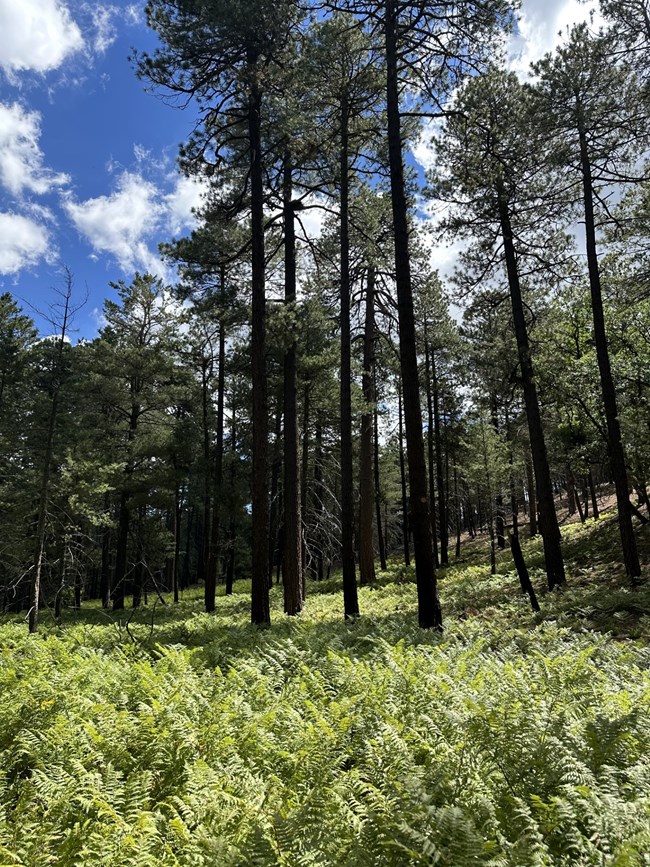
NPS photo / T. Wiewel Low ElevationIn the lower elevations of the park, mesquite, palo verde and ironwood dominate terrestrial surfaces. These species are extremely important as the Rhizobia in their root nodules helps to rid bacteria from the atmopshere. Also, these deep-rooted species exhibit hydraulic lift from deep in the soil profile, redistributing water to their upper roots and allowing other plants to thrive beneath them. It is for this reason these species are termed as "life islands" where hundreds of species can be found growing beneath them, benefitting from reduced sunlight, heightened nitrogen and soil wetness. Smaller woody species such as catclaw Mimosa, Acacia and even Dalea similarly have symbiosis with Rhizobia to produce increased soil nitrogen. Mid-ElevationCottonwood, Goodding's willow, Arizona Ash, Arizona Walnut and net-leaf hackberry dominate riparian areas giving shade to our precious seasonal streams of the park. Mid-elevations are dominated by moderately sized oaks, which have associations with Miccorhizal fungi that store nitrogen and phosphorus for these species. Pointleaf manzanita, juniper, and piñon pine also enjoy these mid-elevations. High ElevationThe higher elevations (above 7,000) are less biodiverse but offer much cooler and more shaded conditions. These areas still get cold enough during the winter to cold stratify pines, firs, juniper and maple seeds for germination. These species often experience wildfire, and have a somewhat unclear future when considering climate change and elevational habitat changes. Species that need long periods of cold temperatures in winter are becoming higher and higher risk for extirpation in the Madrean Sky Islands (like the Rincon Mountains of the east district of Saguaro). Other species at these elevations include gambel's oak, mountain mahogany, New Mexico locust, and even western white pine. Common Trees and Shrubs
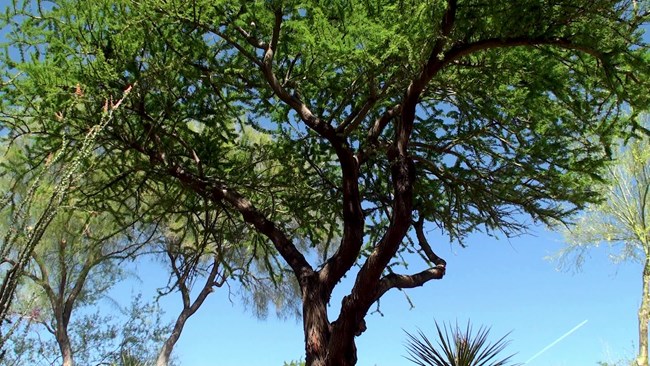
Velvet mesquite (Prosopis velutina)There are several mesquite species in the southwest, but the velvet mesquite is the one in Saguaro National Park. It has larger leaves than the other legume trees in the park. The leaves are larger than those of the other legume trees in the park, and they have a soft, fuzzy, gray-green color and fuzzy seed pods. The smaller branches are greenish, while the larger branches and trunk are dark gray to almost black. It has pale yellow catkin flowers and long, tan to reddish seed pods. 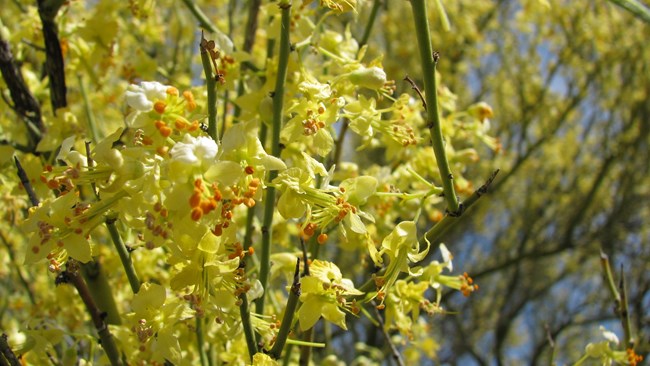
Foothill (yellow) paloverde (Parkinsonia microphyllum [Cercidium microphyllum])This is the most common tree in the Tucson Mountain District (west) of the park. It grows primarily on hillsides and the upper bajada. The green color comes from chlorophyll in the bark of branches and the main trunk. The tiny leaves are drought deciduous (leaves fall off during unfavorable conditions) and the chlorophyll in the bark aids in photosynthesis. 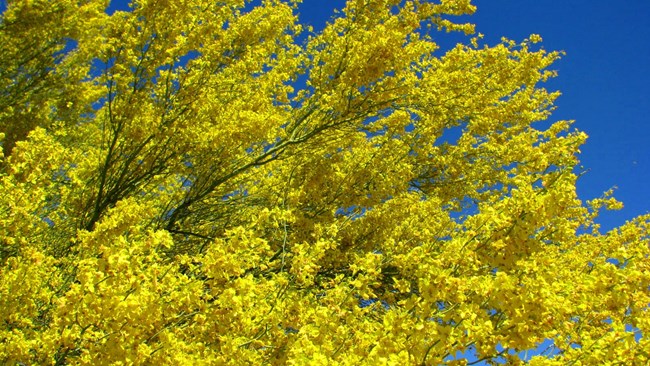
Blue paloverde (Parkinsonia floridium [Cercidium floridium])Blue paloverde trees grow in sandy washes on the lowest portion of the bajada and out into the valley. They grow larger than the foothill paloverde, and the branches have a bluish-green color. The blue-green color is from chlorophyll in the bark of the branches and the main trunk. The branches are flexible and do not terminate in sharp points, but they do have small thorns. The small deciduous leaves are fewer in number and larger than those of the foothill paloverde, and they have have a bluish cast to them. It has showy, bright yellow flowers in the spring, and its maximum lifespan is 40 to 50 years 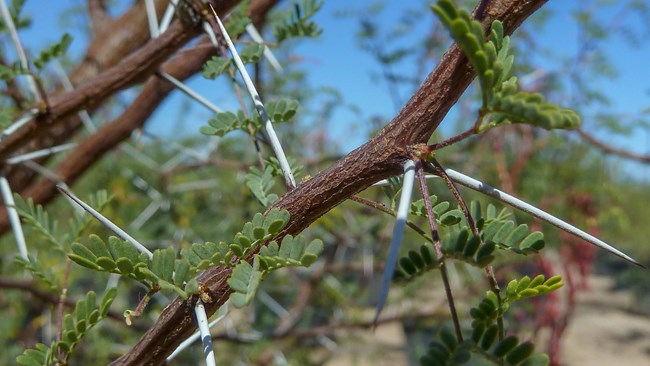
Whitethorn acacia (Vachella constricta [Acacia contricta])This small to medium legume shrub grows anywhere from 6 to 15 feet in height. The newer branches are reddish, fading to brown and gray as they age. Its name comes from the straight, white thorn, although older plants sometimes lack these thorns. 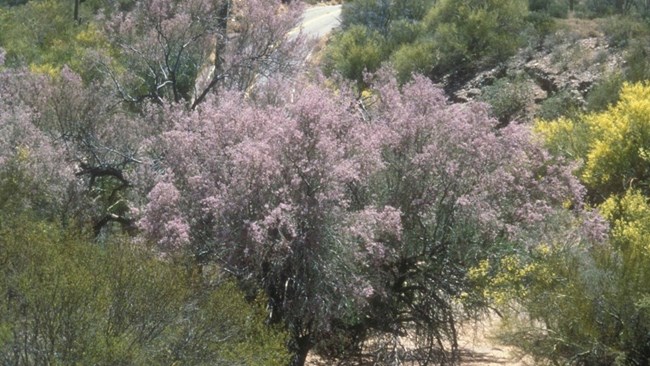
Desert ironwood (Olneya tesota)The desert ironwood tree grows to 30 feet in height. The gray-green leaves are smaller than those of the mesquite, and it has short, slightly curved thorns on its branches up to an inch in diameter. Pale lavendar, pea-shaped flowers appear in late spring. 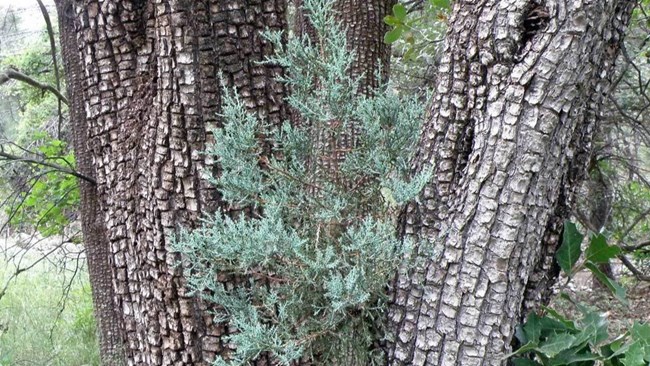
Alligator juniper (Juniperus deppeana)The juniper tree loves mid-level elevation, so it is not seen in the Tucson Mountain District (west) of the park, but it can be found in the backcountry of the Rincon Mountain District (east). This tree can grow 30 to 50 feet tall. They have an ashy gray bark that looks alligator-skin-like, hence its name. The needles on the alligator juniper are blue-green in color, and it produces light blue berries. 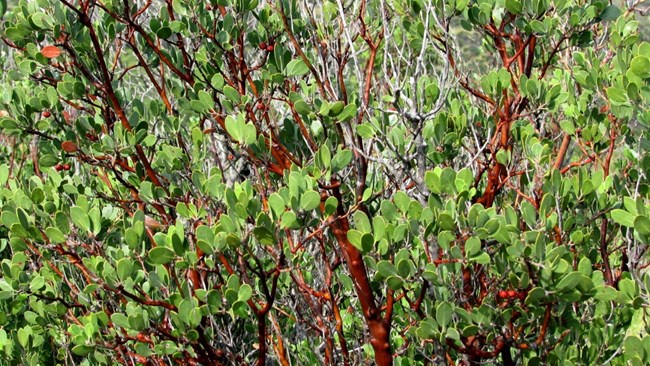
Pointleaf manzanita (Arctostaphylos pungens)Manzanita shrubs are found on rocky hillsides among the chapparall type and up to the openings of the ponderosa communities. Their range is roughly 3,000 to 8,000 feet in elevation. They have rigid, spreading branches and can grow over 6 feet tall. Manzanitas produce pink flowers as well as berries that are orange to brownish in color. 
Douglas fir (Pseudotsuga menziesii)These beautiful firs are found along rocky slopes from 5,000 to 8,000 feet elevation. A douglas fir can grow up to 160 feet tall, and it is characterized by its deeply furrowed bark with gray areas as it ages. The oldest specimens are some of the largest species in the region. The douglas fir can be distinguished from other species by its flattened needles with rounded tips, as well as the papery cones with three papery bracts. 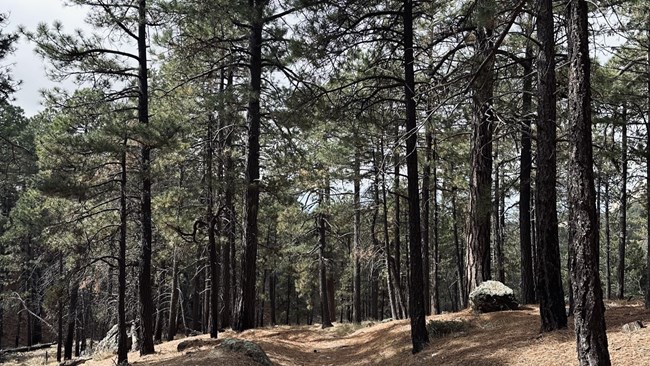
Arizona pine (Pinus arizonica)The Arizona pines have straight trunks and grow up to 115 feet tall. The branches are thick and strong with the lower ones often drooping and the higher ones growing upward. The bark is irregularly fissured with scaly, reddish-brown plates. |
Last updated: May 5, 2025
